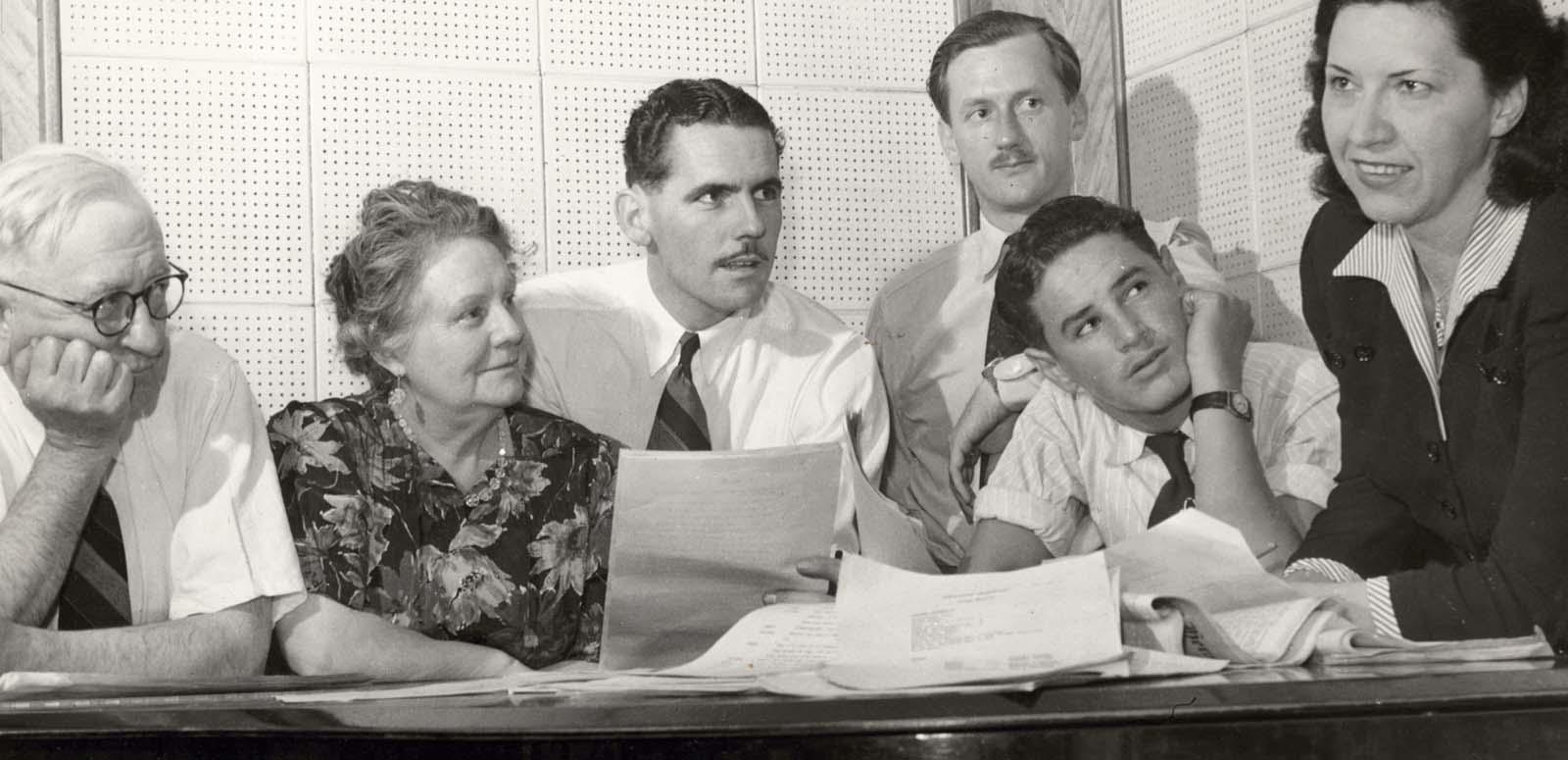

Radio series
Drama and comedy from Australian radio's golden age
It is hard to imagine now just how big radio was in the period before television arrived. This collection gives a taste of the wide variety of genres of radio series that Australian audiences enjoyed.
It brings together excerpts from Australian radio dramas and comedies, principally dating from the 1930s to the 1950s – a golden age for radio.
You can listen to an Australian incarnation of Superman (voiced by Leonard Teale), follow criminal case files from the Victorian police in D24 and hear future Oscar-winning actor Peter Finch cut his teeth in dramas and soap operas like Mutiny of the Bounty and Random House.
Other examples were squarely aimed at regional and rural audiences – including the long-running Blue Hills and Dad and Dave.
Learn more about the pioneering women producers, writers and stars who worked on these programs like Grace Gibson, Dorothy Crawford, Lynn Foster, Queenie Ashton, Ethel Lang and Amber Mae Cecil.
You can also listen to radio horror and thriller serials of the 1940s and '50s.
Main image: Radio producer Grace Gibson (far right) with actors Marshall Crosby, Nellie Lamport, Howard Craven, Nigel Lovell and Warwick Ritchie, c1944. NFSA title: 359204
The National Film and Sound Archive of Australia acknowledges Australia’s Aboriginal and Torres Strait Islander peoples as the Traditional Custodians of the land on which we work and live and gives respect to their Elders both past and present.

